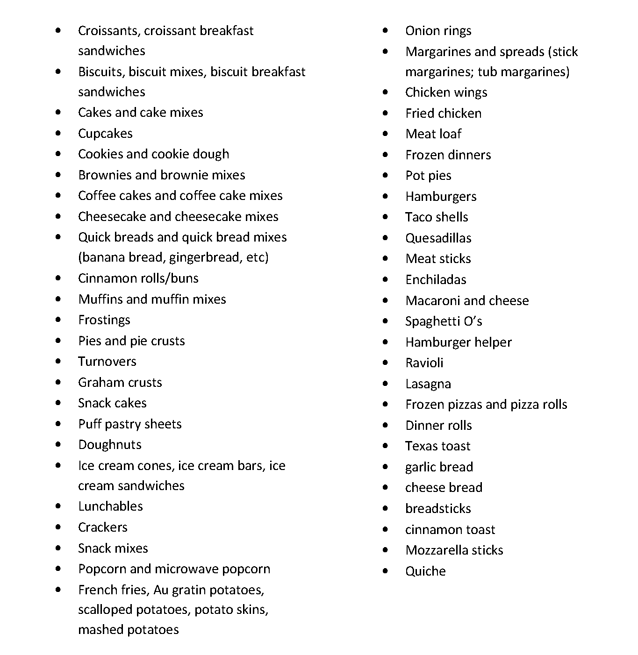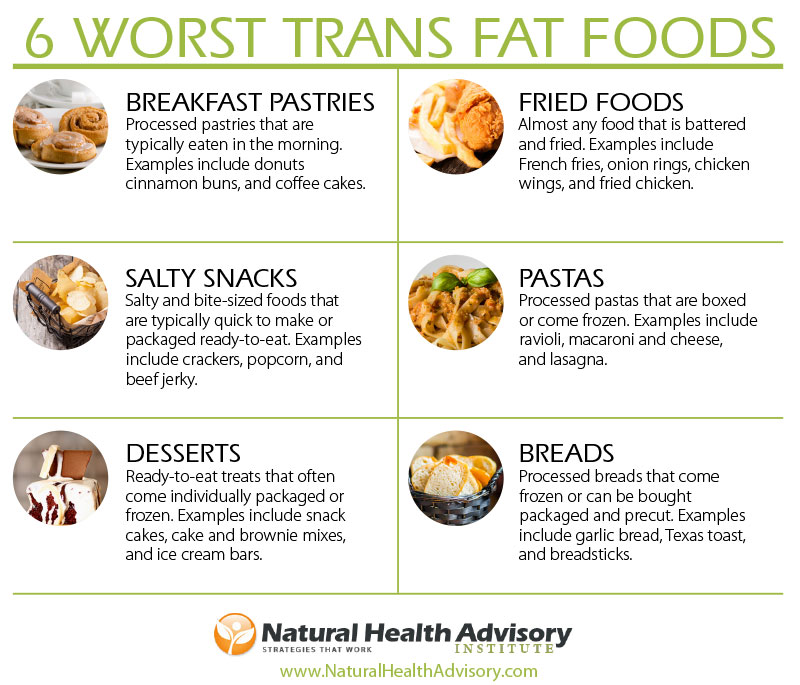6 Worst Trans Fat Foods You Commonly Consume
With the FDA’s recent proposal that trans fats be removed from the “Generally Recognized as Safe” list, the use of partially hydrogenated oils in processed foods may finally come to an end. But even with this new proposal, the end of trans fats in the food supply isn’t likely to happen soon. Plenty of foods sold in restaurants, supermarkets, and convenience stores across the U.S. still contain trans fats, even if the label says, “0 grams per serving.” So how do you recognize these worst trans fat foods?
What are trans fats?
Trans fats are the industrially produced, artificial fats contained in partially hydrogenated oils. These dangerous fats are a well-established cause of high cholesterol, clogged arteries, and heart attacks. As you learned in part 1 of this article, they also are associated with an increased risk of many other common health problems, from mood/behavior/cognitive disorders to cancer and infertility. Trans fats are so downright nasty that they’ve been shown to increase your risk of dying from all causes.[1]
Trans fats can be hard to identify
Clearly, if you care about your health you’ll not want to wait on the government to legislate trans fats out of the food we eat but rather start avoiding them now. The trouble is that trans fats in foods aren’t always easy to identify. Depending on your size and current health status, just a few grams of trans fat a day is all it takes in some cases to significantly increase your risk of disease. As discussed in part 1, foods are allowed to claim “0 grams trans fat,” as long as they have less than 0.5 grams of trans fat per serving. However, many people eat more than one serving of trans fat-laden foods in a sitting. Total grams add up quickly and easily, especially if you tend to frequently eat certain brands or types of food products, as you’ll see below.
Types of foods containing trans fats
Researchers from Harvard School of Public Health published a study in 2013 in which they reported on levels of trans fats in US supermarket and brand-name foods.[2] The following types of foods, in no particular order, were some of the worst offenders for containing trans fats:


Brands of foods containing trans fats
Even though there is a lot of variation even among foods of the same type, the authors of the Harvard study concluded, “Many products remain in the food supply that contain substantial amounts of industrially produced trans fatty acids.” Because not every brand or manufacturer of the types of foods listed above uses trans-fats, you can’t identify trans fat foods simply by the type of food it is. In other words, not all croissants or doughnuts will contain trans-fat. It depends on the manufacturer and when the food was produced, as companies tend to change their ingredients.
The researchers did, however, identify certain brands that, at least at the time of the study (data were collected in 2011), were commonly utilizing trans fats. Some of these parent companies and brands include:

Ridding trans fat foods from your shopping cart
No doubt you recognize many of these companies. The next time you’re at the supermarket, take a look at your chosen food’s ingredients before throwing it in the cart. The amount of trans fat listed in the Nutrition Facts box is not as important as what’s listed in the ingredients. If you see “partially hydrogenated vegetable oil” in the list, put the food back on the shelf and look for a different brand, consider an alternate food type, or think about making the food from scratch. In addition to being far healthier, cooking from scratch is often not as expensive, time consuming, or complicated as you might think.
How do you protect your family from excessive trans fats? Tell us now
Many of our readers are already aware of the dangers of trans fats even though the FDA is just now catching up. But how do you go about reducing your trans fat load? Is there a strategy or technique you use that would benefit other readers? Please share it now in the comments section below, and thank you
[1] Am J Clin Nutr. 2013 May;97(5):1121-8.
[2] Prev Chronic Dis. 2013;10:E85.
This post was originally published in 2013 and has been updated.


 Ask the EN Experts March 2025
Ask the EN Experts March 2025  Vegan Diet Better Than Omnivore Diet for Cardiovascular Health
Vegan Diet Better Than Omnivore Diet for Cardiovascular Health 